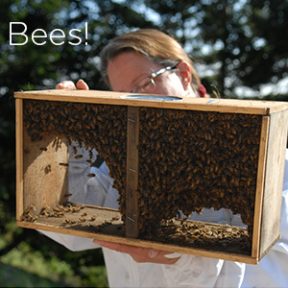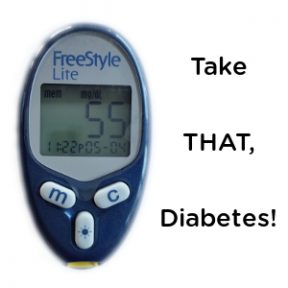 Let’s face it, tackling reading skills was NOT a pleasant experience for most people. As a matter of fact, I find that when I mention educational games or teaching reading most parents treat it like a punishment or something you have to do (like taking your medicine by holding your breath). But when Nicole was 18 months old, I started playing vocabulary building and reading readiness games with her, and found that she really liked them. She actually preferred them over other activities.
Let’s face it, tackling reading skills was NOT a pleasant experience for most people. As a matter of fact, I find that when I mention educational games or teaching reading most parents treat it like a punishment or something you have to do (like taking your medicine by holding your breath). But when Nicole was 18 months old, I started playing vocabulary building and reading readiness games with her, and found that she really liked them. She actually preferred them over other activities.
I guess it all depends on how you introduce learning to your child. If learning and “school” was an unpleasant experience for you, you’ll need to leave your past behind and look at teaching your child as an adventure in a new world — even for you! Your excitement — genuine excitement — will be your child’s first exposure to learning. So make it a great one!
You don’t need to spend a fortune on educational games. For toddlers to pre-kindergartners, you probably have most of the materials you need. As you know, the English language is not phonetic — not even close. Try sounding out “thought” or “phone”! I found the best way to introduce reading is to teach the SOUNDS that individual letters and groups of letters make. So many people only teach the letter names — which doesn’t really help with the reading process! Or they only focus on short and long vowels and the main consonants. But if you give children ALL OF THE TOOLS they need to learn to read, they will thrive.
So what tools do they need? First, start with the letter names. I know I just mentioned that the names aren’t important but they make learning their sounds much easier. So just teach the names of the letters so they recognize their shapes. Then, teach ALL of the sounds that each letter makes. In other words, don’t teach them that the letter “C” only makes a “cuh” sound; teach them that the letter “C” makes TWO SOUNDS: “cuh” and “sssss.” That way, you really are giving them tools to decode words!
 Putting several letters together to create new sounds is really the key to teaching reading. When you put 2 letters together it’s usually called a blend because you are doing just that — blending the sounds. If English were that easy, reading would be a piece of cake! But when you put 4 letters together, like O-U-G-H, you’ll lose every kid. These are called PHONOGRAMS. Did you know that there are 6 ways to pronounce “ough”? There’s ah (wrOUGHt), owe (dOUGH), ooh (thrOUGH), ow (bOUGH), uff (rOUGH), off (cOUGH). Who created this language? Are you confused? Imagine what it’s like for a young child! Check out LogicOfEnglish.com to learn all of the sounds our alphabet makes. They have great video and audio support so you can relearn these decoding skills.
Putting several letters together to create new sounds is really the key to teaching reading. When you put 2 letters together it’s usually called a blend because you are doing just that — blending the sounds. If English were that easy, reading would be a piece of cake! But when you put 4 letters together, like O-U-G-H, you’ll lose every kid. These are called PHONOGRAMS. Did you know that there are 6 ways to pronounce “ough”? There’s ah (wrOUGHt), owe (dOUGH), ooh (thrOUGH), ow (bOUGH), uff (rOUGH), off (cOUGH). Who created this language? Are you confused? Imagine what it’s like for a young child! Check out LogicOfEnglish.com to learn all of the sounds our alphabet makes. They have great video and audio support so you can relearn these decoding skills.
Although this may seem difficult, it really isn’t. We’re turning reading into a science by giving kids the tools they need to break down the reading process. Simple as that! Using plastic letters, teach your kids the letter sounds — all of them — and then they’ll have fun making up nonsense words using their new-found skills. Put the letters together to form phonograms. We created posters with each phonogram and my girls would add words that contained each phonogram. You might be surprised by your child’s fascination with the science of reading when they start pointing out letters and phonograms while you’re driving or shopping! This is an excellent way to learn the many ways to read and spell.
 Let’s face it, tackling reading skills was NOT a pleasant experience for most people. As a matter of fact, I find that when I mention educational games or teaching reading most parents treat it like a punishment or something you have to do (like taking your medicine by holding your breath). But when Nicole was 18 months old, I started playing vocabulary building and reading readiness games with her, and found that she really liked them. She actually preferred them over other activities.
Let’s face it, tackling reading skills was NOT a pleasant experience for most people. As a matter of fact, I find that when I mention educational games or teaching reading most parents treat it like a punishment or something you have to do (like taking your medicine by holding your breath). But when Nicole was 18 months old, I started playing vocabulary building and reading readiness games with her, and found that she really liked them. She actually preferred them over other activities.
I guess it all depends on how you introduce learning to your child. If learning and “school” was an unpleasant experience for you, you’ll need to leave your past behind and look at teaching your child as an adventure in a new world — even for you! Your excitement — genuine excitement — will be your child’s first exposure to learning. So make it a great one!
You don’t need to spend a fortune on educational games. For toddlers to pre-kindergartners, you probably have most of the materials you need. As you know, the English language is not phonetic — not even close. Try sounding out “thought” or “phone”! I found the best way to introduce reading is to teach the SOUNDS that individual letters and groups of letters make. So many people only teach the letter names — which doesn’t really help with the reading process! Or they only focus on short and long vowels and the main consonants. But if you give children ALL OF THE TOOLS they need to learn to read, they will thrive.
So what tools do they need? First, start with the letter names. I know I just mentioned that the names aren’t important but they make learning their sounds much easier. So just teach the names of the letters so they recognize their shapes. Then, teach ALL of the sounds that each letter makes. In other words, don’t teach them that the letter “C” only makes a “cuh” sound; teach them that the letter “C” makes TWO SOUNDS: “cuh” and “sssss.” That way, you really are giving them tools to decode words!
 Putting several letters together to create new sounds is really the key to teaching reading. When you put 2 letters together it’s usually called a blend because you are doing just that — blending the sounds. If English were that easy, reading would be a piece of cake! But when you put 4 letters together, like O-U-G-H, you’ll lose every kid. These are called PHONOGRAMS. Did you know that there are 6 ways to pronounce “ough”? There’s ah (wrOUGHt), owe (dOUGH), ooh (thrOUGH), ow (bOUGH), uff (rOUGH), off (cOUGH). Who created this language? Are you confused? Imagine what it’s like for a young child! Check out LogicOfEnglish.com to learn all of the sounds our alphabet makes. They have great video and audio support so you can relearn these decoding skills.
Putting several letters together to create new sounds is really the key to teaching reading. When you put 2 letters together it’s usually called a blend because you are doing just that — blending the sounds. If English were that easy, reading would be a piece of cake! But when you put 4 letters together, like O-U-G-H, you’ll lose every kid. These are called PHONOGRAMS. Did you know that there are 6 ways to pronounce “ough”? There’s ah (wrOUGHt), owe (dOUGH), ooh (thrOUGH), ow (bOUGH), uff (rOUGH), off (cOUGH). Who created this language? Are you confused? Imagine what it’s like for a young child! Check out LogicOfEnglish.com to learn all of the sounds our alphabet makes. They have great video and audio support so you can relearn these decoding skills.
Although this may seem difficult, it really isn’t. We’re turning reading into a science by giving kids the tools they need to break down the reading process. Simple as that! Using plastic letters, teach your kids the letter sounds — all of them — and then they’ll have fun making up nonsense words using their new-found skills. Put the letters together to form phonograms. We created posters with each phonogram and my girls would add words that contained each phonogram. You might be surprised by your child’s fascination with the science of reading when they start pointing out letters and phonograms while you’re driving or shopping! This is an excellent way to learn the many ways to read and spell.
 My husband claims that he must be a KING because he has a QUEEN and 2 PRINCESSES! Seriously. He insisted on having all male dogs in an attempt to balance the raging hormones here in our household! I loved having all of the female energy here at home — we designed vanities for each of our rooms, built a dance studio with floor to ceiling mirrors and a dance floor, and organized our hair accessories and hats all over our walls.
My husband claims that he must be a KING because he has a QUEEN and 2 PRINCESSES! Seriously. He insisted on having all male dogs in an attempt to balance the raging hormones here in our household! I loved having all of the female energy here at home — we designed vanities for each of our rooms, built a dance studio with floor to ceiling mirrors and a dance floor, and organized our hair accessories and hats all over our walls.
But my husband’s biggest beef was with OUR SHOES!
We had hundreds of shoes. Storing the shoes became a problem when our shoe racks consumed our closets and he had to move his clothes to the laundry room! Hmm. In hindsight, that probably wasn’t fair. Even so, we bought every kind of shoe rack — the kinds that hang on doors, stackables in the closet, and we even built shoe cubbies at every entrance to our house. But still there were piles of shoes in closets. When your shoes are in piles you can’t really tell what you have, so we had to keep buying more…which can be a good thing or a bad thing depending on your perpective (and/or bank balance).
My youngest daughter Jaclyn recently moved into a condo in Mountain View. Shortly after moving in, she reported that she didn’t have enough room in her (15 foot walk-in) closet for all of her shoes, so I decided to build her a shoe storage unit that could hold them all and use the least amount of floor space. Quite a tall order! I knew it needed to be a vertical design and came up with the floor-to-ceiling SHOE CAROUSEL.
I went down to San Lorenzo Lumber and showed my drawings to Mario, the foreman. He cut 24-inch circles out of half-inch plywood, which I lugged home and then drilled 1-inch holes in the center of each. Then I bought 1-inch threaded pipes with connector pieces long enough to reach from the floor to the ceiling. Wanting to make the shoe carousel spin so we could see all of the shoes at a glance, I installed a Lazy Susan (I get teased about this every time!) between the first 2 boards. Then I placed a large washer and big nut between each board. In order to maximize our space, we measured the height of various shoes and created custom height between boards. For boots, we left a 14-inches space while tennis shoes only needed 5 inches. Jaclyn has dozens of 6-7 inch heels so she has 2 8-inch high shelves.
[carousel][carousel-item active=”true”] [/carousel-item][carousel-item]
[/carousel-item][carousel-item] [/carousel-item][carousel-item]
[/carousel-item][carousel-item] [/carousel-item][/carousel]
[/carousel-item][/carousel]
The completed Shoe Carousel has 13 shelves that are 24-inches wide. By putting 6 PAIRS of shoes on each shelf, it could hold at least 78 pairs of shoes (that’s 156 shoes!). We topped off the shoe carousel with a closet-pole holder to keep the pole in place when you turn the carousel. With a quick spin, we can see every shoe we own and we’ve probably saved lots of money to boot (pun intended). This was an easy and very practical project, and now Jaclyn has tons of floor space in her closet. Problem solved!

 With summer vacation just around the corner, the kids are so ready for a break from school. If you’re a working mom, you’ll need to plan out their entire summer and there’s a lot to consider.
With summer vacation just around the corner, the kids are so ready for a break from school. If you’re a working mom, you’ll need to plan out their entire summer and there’s a lot to consider.
There are two types of extreme mothers out there: the TIGER MOM, and the HELICOPTER MOM.
The Tiger Mom is based on Amy Chua’s book The Battle Hymn of the Tiger Mother. After that book came out, there was a huge outcry from American moms who were horrified with Chua’s parenting style. If you missed it, she demanded that her daughters play piano, and she wouldn’t let them play with friends or go to parties because frivolous activities like that took away from studies and piano practice. The Asian stereotype!
The Helicopter Mom stops games before they end so that nobody’s feelings get hurt, and she hovers over her children — hence “helicopter”, often doing their homework and chores for them. The overprotective stereotype!
Children raised by moms of either stereotype are doomed for some type of failure:
The Tiger Mom’s kids might be virtuosos and mini Einsteins but they probably suffer from anxiety — never being quite good enough and not having the autonomy to make their own decisions.
The Helicopter Mom’s kids, on the other hand, might be stress free but they probably lack a full personal identity because they haven’t had the opportunity to challenge themselves and work hard towards a personal goal.
Both types of moms interfere with their children developing personal character, having a sense of real accomplishment for reaching their goals, and understanding how to deal with setbacks and obstacles in the real world.
This summer, don’t be a Tiger Mom. Don’t make your child practice endless drills for the sake of “getting into college.” Don’t hold them back from being children because you want them to develop skills that you have decided are good for them. And don’t control every moment of their lives so they feel like they’re dead inside. You might be squeezing the youth right out of them!
This summer, don’t be a Helicopter Mom. Let your child get some bumps and bruises. Stop catching them as they begin to fall because they’ll never be able to make good choices if they don’t have experiences to learn from. Living in a bubble will get boring and they might turn into terrors when they’re older. That’s bad for everyone! You might find that your kid loses motivation for doing anything because there’s no real point in doing them. Let them experience the highs of winning and the lows of losing. That’s how they become stronger, motivated, and wiser.
This summer, find a balance for your kids. Give them an enriching summer experience filled with teamwork, creativity, and challenges. Let them be part of the planning, implementation, and completion. Don’t create unrealistic plans and don’t micromanage their every move.
I like to call this “third way” the American Tiger Mom – that’s what I label myself. By working with my girls to lay out exciting summer plans that included musical theater productions in our garage, culinary classes, and some academics (you don’t want their brains to turn ENTIRELY to mush over the summer), their summers added the much needed break from school but gave them opportunities to lead and explore activities that they didn’t have time for during the school year.
So, when planning your child’s summer, find your balance and you might find that they become a little wiser and more ready to start school in the fall.
 Pardon the pun, but this is a hair related post! Anyway, I love this time of year! All of the kids are talking about PROM and the girls are out shopping for dresses. It’s a whole big thing, and having awesome hair is a big part of the prom experience. My girls were involved in dance while they were growing up, AND they had long hair, so we spent quite a bit of time working out new and interesting ways to keep their hair STYLISHLY out of the way.
Pardon the pun, but this is a hair related post! Anyway, I love this time of year! All of the kids are talking about PROM and the girls are out shopping for dresses. It’s a whole big thing, and having awesome hair is a big part of the prom experience. My girls were involved in dance while they were growing up, AND they had long hair, so we spent quite a bit of time working out new and interesting ways to keep their hair STYLISHLY out of the way.
Last year, my daughter Jaclyn and I put our heads together and created dozens of fancy braids with updos, weaves, and all kinds of new looks, which we then put together in a little book we like to call “Simply Gorgeous Braids“. With our wonderful models McKenzie Beck, Danielle Kissinger, and Tasha Justice, we photographed all of the steps to create all of the braids.
I’ll feature a few of my favorite braids here over the next few weeks until all of the proms are over! I hope someone finds them handy!
[carousel] [carousel-item active=”true”] [/carousel-item] [carousel-item]
[/carousel-item] [carousel-item] [/carousel-item] [carousel-item]
[/carousel-item] [carousel-item] [/carousel-item][/carousel]
[/carousel-item][/carousel]
 “Don’t touch that, it’s HOT!” — ever heard that before? Brings back old memories… While watching a friend prepare lunch for us, I was taken aback by how she ruled the kitchen. She had 2 things cooking on the stove, something delicious in the oven, and she had the food processor whipping up the most amazing salad dressing I had ever eaten.
“Don’t touch that, it’s HOT!” — ever heard that before? Brings back old memories… While watching a friend prepare lunch for us, I was taken aback by how she ruled the kitchen. She had 2 things cooking on the stove, something delicious in the oven, and she had the food processor whipping up the most amazing salad dressing I had ever eaten.
When her 4-year old daughter — who was also watching her mother with amazement — walked over to the stove to stir the pot, her mother scolded her. I had to bite my tongue because I’m sure whatever I was going to say would not have been well received.
As much as I wanted to turn that into a “teachable moment”, I didn’t have the right to critique. But I DO have the right to blog about it later!
Creating delicious meals or even tossing together a quick salad will be a mystery to children if all they do is sit at the dinner table when meals magically appear. While it will take a little longer to prepare meals when you’re teaching a 4-year old the safety precautions of stirring a hot pot of stew or using a food processor, they’ll learn more safety by DOING than by being told not to do something.
When children want to “help” and be part of the process, they get to own their meals. They’ll be more inclined to taste new ingredients and learn how to combine them to create new flavors or textures. Here’s a secret: this is a CHEMISTRY LESSON. Besides, they’re part of the family and they SHOULD take part in preparing family meals.
 When my girls were young — 10 and 6 years old — our family routine included having each member of the family cook one dinner per week. The only rule was that there needed to be a protein, veggie, and starch (pre-carb diets!). Nicole made Chinese Chicken Salad with garlic bread every Monday for months. We loved it and enjoyed having a predictable, delicious meal each week. Jaclyn, on the other hand, learned how to read our family recipes (PRO TIP: ENGLISH LESSON) and even created entrees on her own! At 6 years old, she once made chicken pesto pasta and salad. She even lit candles!
When my girls were young — 10 and 6 years old — our family routine included having each member of the family cook one dinner per week. The only rule was that there needed to be a protein, veggie, and starch (pre-carb diets!). Nicole made Chinese Chicken Salad with garlic bread every Monday for months. We loved it and enjoyed having a predictable, delicious meal each week. Jaclyn, on the other hand, learned how to read our family recipes (PRO TIP: ENGLISH LESSON) and even created entrees on her own! At 6 years old, she once made chicken pesto pasta and salad. She even lit candles!
This also taught them how to prepare ahead of time. They needed to plan their menus and get a shopping list to me by Saturday the week before. At first, this invoked complaints, but they jumped on board when they realized they could get ANYTHING from the grocery store, as long as it was part of a recipe! This of course immediately led to the inclusion of DESSERT in their meal prep, and we all really enjoyed the meals!
 Well, when I say “we”, I mean that I didn’t actually get the bees. I can think of a thousand reasons why driving in a van with 10,000 bees doesn’t sound like a good idea. My husband Rob and friend John did the honors and picked up the bees from a local beekeeper and carefully drove them across town. Unbeknownst to me, they placed the bees in the greenhouse to stay overnight. Oh, and they forgot to tell me they were in there.
Well, when I say “we”, I mean that I didn’t actually get the bees. I can think of a thousand reasons why driving in a van with 10,000 bees doesn’t sound like a good idea. My husband Rob and friend John did the honors and picked up the bees from a local beekeeper and carefully drove them across town. Unbeknownst to me, they placed the bees in the greenhouse to stay overnight. Oh, and they forgot to tell me they were in there.
The bees were housed in wooden boxes the size of a large shoe box with metal screens on either side. When I finished working in my office that day, I went out to the greenhouse to water the plants. Which is a normal thing that people do. As I was spraying the seedlings, I was surprised to discover that I was face to face with 5,000 bees about 6 inches from my nose! What happened next is kind of a blur, but it involved screaming and spraying both hives with cold water. Moral of the story: SURPRISE BEES are not a thing that should ever happen.
Luckily, I didn’t knock the hives over or I might not be here to document it. I did, however, invite our friend and beekeeper, Andrea, to coach the guys as they installed the 2 hives the following day. When they were all dressed up in their “costumes” as I called it (bee gear), I ran outside to take photos of them. They were giddy with excitement but intentionally poised (beekeepers need to be CALM). As they headed down the hill to install the bees in the hives we assembled, Andrea asked me if I would like to join them – she had apparently brought an extra bee suit! Ummm, no. That’s what telephoto lenses are for. My position is that bees are best observed from a nice safe distance.
I was surprised that the bees didn’t swarm around when they opened up the boxes. Rob just scooped them up with his glove-covered hands and placed fistfuls of bees into the hives. When he started knocking the wooden box against the hive to get the last remaining stragglers, I was sure he was going to turn into a screaming, running man-shaped bee swarm, but … nothing happened. The installation of both hives went smoothly, and there was no screaming or running around.
[carousel]
[carousel-item active=”true”] [/carousel-item]
[/carousel-item]
[carousel-item] [/carousel-item]
[/carousel-item]
[carousel-item] [/carousel-item]
[/carousel-item]
[/carousel]
After they installed the bees, they placed the queens (one for each hive) right into the hives. The queens were kept separate in tiny little boxes with screens on one side – very clever contraption.
Because the honeycombs were bare, the guys bought feeders that hold the sugar-water mixture and poured the solution in so the bees would have food to eat. They plan to refill the sugar-water mixture every couple of days for about a month while our buzzy friends become acclimated to their new homes. Then, with any luck at all, the bees will start foraging for pollen in our fruit trees and berry patches. Can’t wait to see the honey production!
 Productivity is the key to success. Period. I’ve always believed that a person with average intelligence who is organized will be more successful than a genius who is disorganized. Why? Organized people simply get things done and reach their goals. Geniuses may have great ideas – and probably lots of them – but they often get swallowed up in distractions and miss opportunities to realize their dreams.
Productivity is the key to success. Period. I’ve always believed that a person with average intelligence who is organized will be more successful than a genius who is disorganized. Why? Organized people simply get things done and reach their goals. Geniuses may have great ideas – and probably lots of them – but they often get swallowed up in distractions and miss opportunities to realize their dreams.
In the article “10 Uncommon Habits of Extraordinarily Productive People“, I like Jeff Haden’s recommendation to let go of things you do because of your ego or to stop striving to reach the extra 5% to be the best. Seem counterintuitive? The garden doesn’t have to be weed free; besides, when the weeds are bigger, they’re easier to pull! Doing things to stroke your ego or to be the extreme perfectionist will waste your valuable time for little ROI (return on investment).
He also suggests ways to say “no” to other time wasters like invitations to parties or social events that you don’t want to go to. You know the ones, your receptionist’s baby shower! I’m guilty of that – I seem to get pulled into outings that take me away from things I enjoy doing – like planting herb gardens!
I like his suggestion of setting time limits on social media – what might seem like a few minutes often rolls into an hour, or more, several times per day, and you somehow end up on the Wikipedia page for a weird marsupial and who really has time to get caught up in all that? I’ve set my social media and news reading to just one hour every morning – it’s like my cup of coffee as I wake up and lie in bed.
And my favorite habit: delegate tasks to others! Sometimes the old idiom: “If you want something done right, do it yourself” isn’t the best advice when you are trying to be productive.
 I generally like to keep this blog pretty low-key, but every once in a while something comes up that makes me want to toot a horn or three. Not for myself, but for some of the kids Merit Academy has helped.
I generally like to keep this blog pretty low-key, but every once in a while something comes up that makes me want to toot a horn or three. Not for myself, but for some of the kids Merit Academy has helped.
There’s a period of time every year that’s always fraught with tension and anxiety: college admissions. Who’s going to get in where? We fire off a ton of (carefully considered) applications, and then we wait for acceptances (hooray!) or rejections (boo!).
This year, out of many Merit students, I’ve gotten the go ahead from a small sample of 3 to share their names and some of the colleges that accepted them. In no particular order, I want to congratulate Amy Peet, Omar Alhait and Teagan Knight for their hard work and stellar range of acceptances.
Here’s a short list of just some of the colleges Merit students have been accepted to this year:
- Brown
- Claremont McKenna
- Columbia
- Princeton
- Stanford
- Wellesley
- Georgetown
- NYU
- Pomona
- UCLA
- USC
- UCSC
- UIUC
- UCSD
- UCSB
- Carnegie Mellon
- UC Berkeley
- Tufts
- American
- University of Washington
 We need to readjust our priorities in regard to education. Did you know that Big Oil and Big Ag suck up $35 BILLION taxpayer dollars per year?
We need to readjust our priorities in regard to education. Did you know that Big Oil and Big Ag suck up $35 BILLION taxpayer dollars per year?
If we took the $21 billion a year our government gives to BIG OIL and $14 billion to BIG AG in corporate subsidies, we could EASILY provide free college for our kids. And not just community colleges, either.
Our collective priorities are out of whack – oil and the big agriculture conglomerates aren’t hurting for money, so it should be going toward a better future for everyone – EDUCATION.
Check out the original article about Obama’s community college plan here.
 I was diagnosed with diabetes last year after being “prediabetic” for about 5 years. Sure, over the past 5 years, I tried to eat less white flour treats like bread, pasta, and my favorite bagels. I thought I was doing all I could to avoid going over the magic 117 glucose number. Nicole, my daughter who is an Emergency Medicine doctor, told me about her many obese patients who suffered from diabetes and their awful prognoses, which was a huge wake up call! Obviously, I didn’t want to go blind or have my feet amputated (how would I play croquet?). So when my glucose hit 140 last year, I realized that I would need to do something drastic — anything — to fix this.
I was diagnosed with diabetes last year after being “prediabetic” for about 5 years. Sure, over the past 5 years, I tried to eat less white flour treats like bread, pasta, and my favorite bagels. I thought I was doing all I could to avoid going over the magic 117 glucose number. Nicole, my daughter who is an Emergency Medicine doctor, told me about her many obese patients who suffered from diabetes and their awful prognoses, which was a huge wake up call! Obviously, I didn’t want to go blind or have my feet amputated (how would I play croquet?). So when my glucose hit 140 last year, I realized that I would need to do something drastic — anything — to fix this.
As you may (or may not) know, I’m a firm believer in Eastern and alternative medicine. So I went to see Dr. Randy Baker, a Stanford MD who practices naturopathy. He recommended I read his colleague’s book “There is a Cure for Diabetes” and go on a strict, raw vegan diet for 3 weeks. But, the notion that “I” would be able to go 3 weeks without my favorite grilled salmon, fresh eggs from our chickens, or my favorite cheeses seemed impossible to me. I felt doomed. DOOOOMED!
But my husband got on board and agreed to do the raw vegan diet with me. And my youngest daughter Jaclyn was doing a similar diet so we commiserated together. So I rid my fridge and pantry of the things I couldn’t eat, and I filled them with organic and raw veggies, nuts, and oils. I eliminated all fruit, soy products (including soy sauce!), processed foods (all grain flours except nut flours), dairy, meat and seafood, and sugars (honey, blue agave nectar, syrups). This almost broke me, but I knew it was just a test. I wanted to see if I COULD cure myself of diabetes via my diet. Because I couldn’t cure myself using my other techniques or even with the meds my western doctor prescribed, I decided to go for it.
I learned how to make vegan pate, pesto hummus, and nut protein bars. Every Sunday, I made my little treats of nuts, pates, dressings, and salads. I think the hardest part was not being able to steam veggies or make stir fries – no cooking allowed! What happened next surprised me.
I felt better almost immediately. By eating whatever I wanted (as long as it was raw vegan) with no restrictions, I felt super-charged. I ate a whole avocado with a spoon! I’d never tried that before — always thought it needed to be between 2 slices of bread with mayo and cheese! I seemed to eat less quantities of food yet felt comfortably full. I did, however, stay away from restaurants that served tempting foods. Our friends still seemed to enjoy healthier meals with us — or at least they didn’t complain! To my surprise, the 3 weeks zipped by quickly.
This morning — exactly 3 weeks later — I pulled out my glucose meter, the device that checks your glucose readings and the lancing device (I really don’t like its name! Sounds like a sword sharp enough to lop off the top of your finger!) that pricks your finger to get a drop of blood. I was excited to see if my glucose levels dropped below the diabetic level, but was terribly fearful of the NEEDLE. Have I mentioned that I don’t like needles? Feeling clever, I decided to use my big toe as a guinea pig. Or guinea toe, I suppose. If I had an appendage that was 20 feet away, I would have chosen that. When I pressed the button (that shot what I thought would be a sword into my toe), nothing happened. I realized that it wasn’t going to be as painful as I had anticipated so I sat down and decided to try my finger. Surprisingly, I didn’t feel it but noticed there was a little blood. I grabbed the test strip and blotched up the job. In a panic, I grabbed the container of test strips and emptied them out on the table (another no-no). I was determined to get every drop of blood from this one stick.
When I read the glucose monitor, I was shocked. I knew I wanted my 140 reading to be below 117, but when I read that it was 55, I was thrilled. I read the small print on the monitor instruction sheet and found that 55 was actually on the low side. I am going to start introducing my favorite foods back into my diet one at a time. I want to understand what foods actually do to my blood glucose. Knowing what I can and cannot eat will give me the will power I need to stay free of diabetes. Oh, and while I was stressing out about my blood glucose levels, changing my diet led to losing 6 pounds, almost by accident! You see, if I can do this, you can too!










